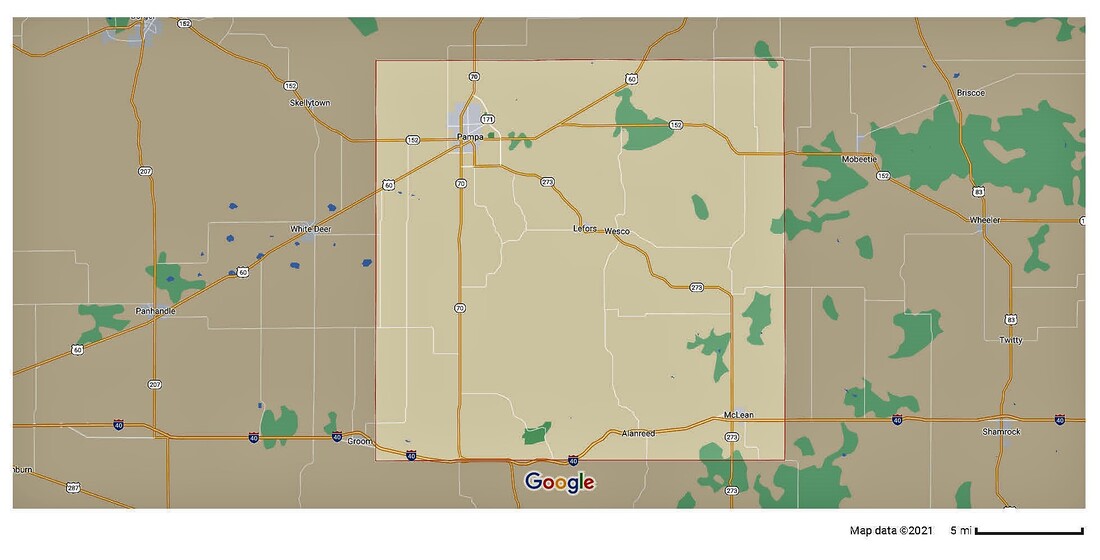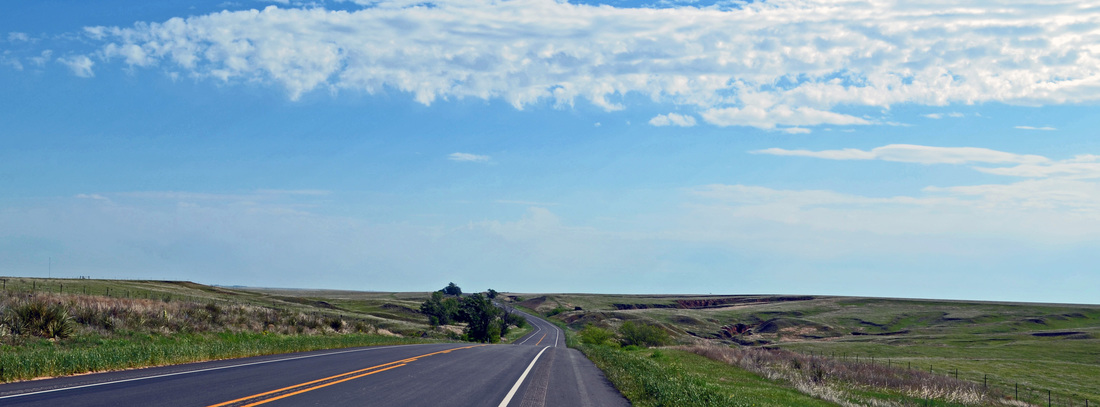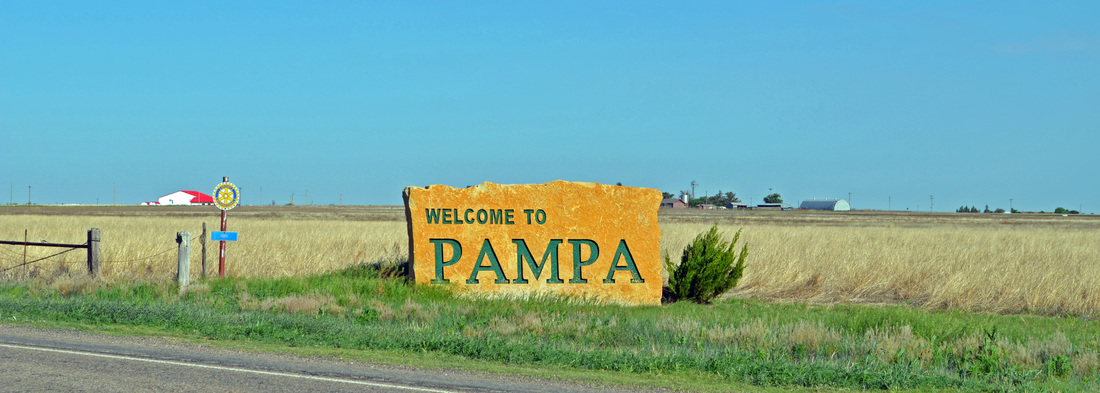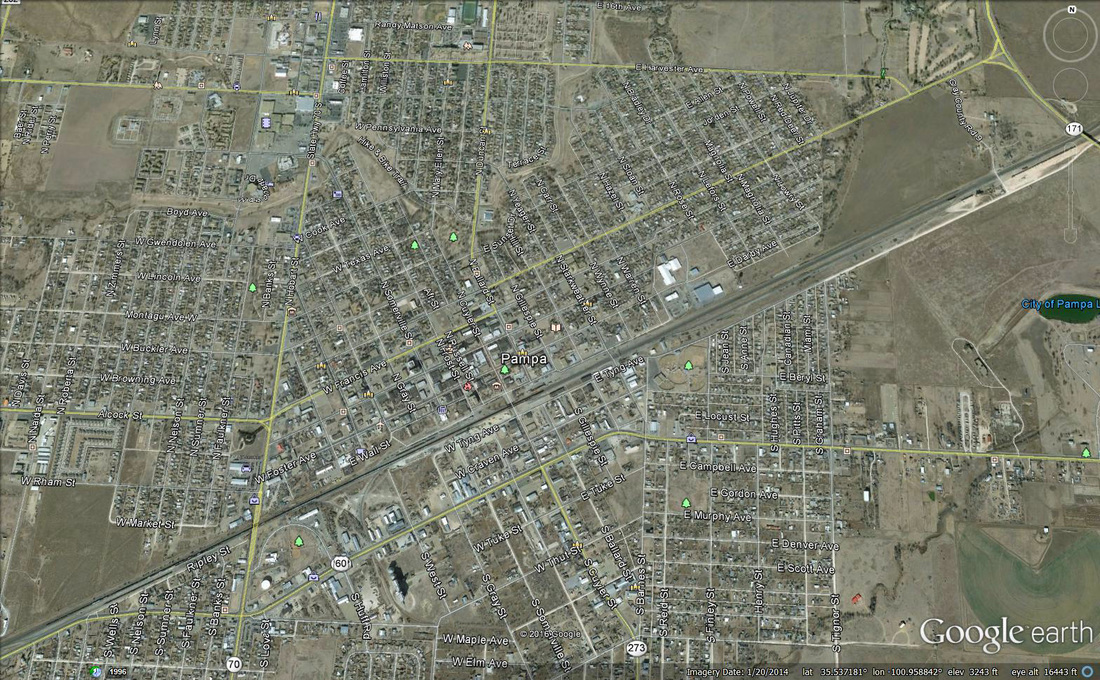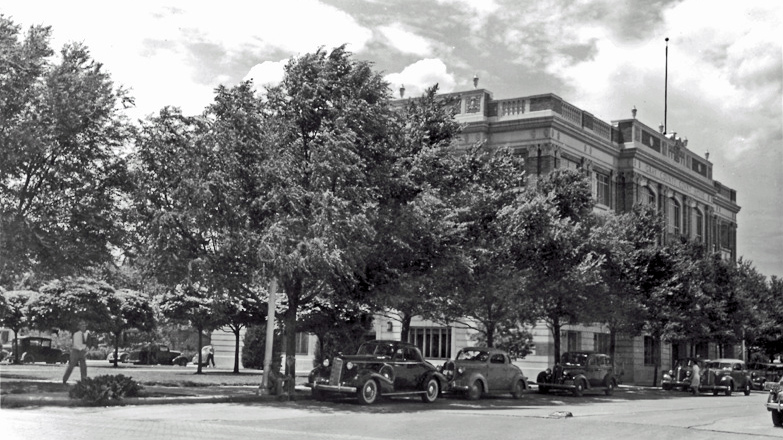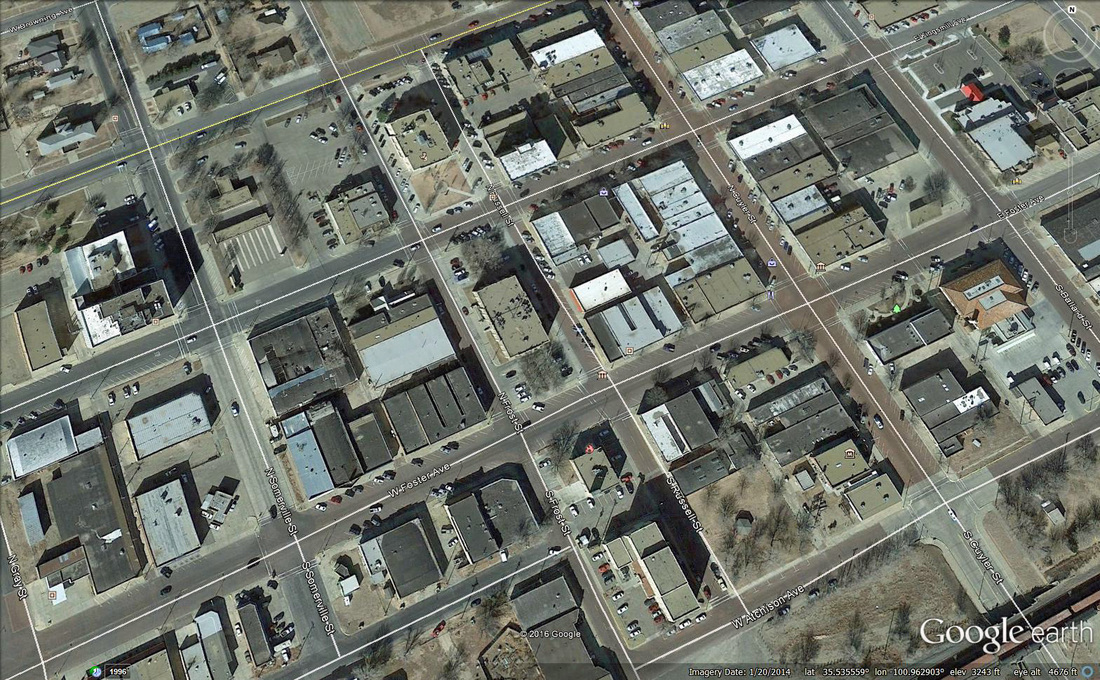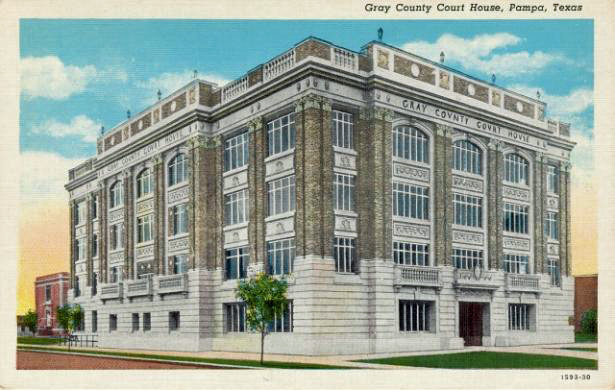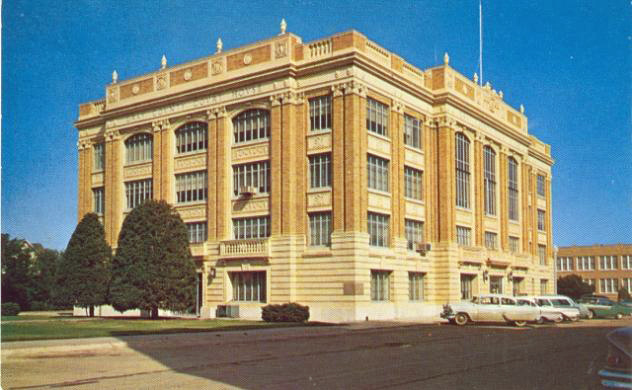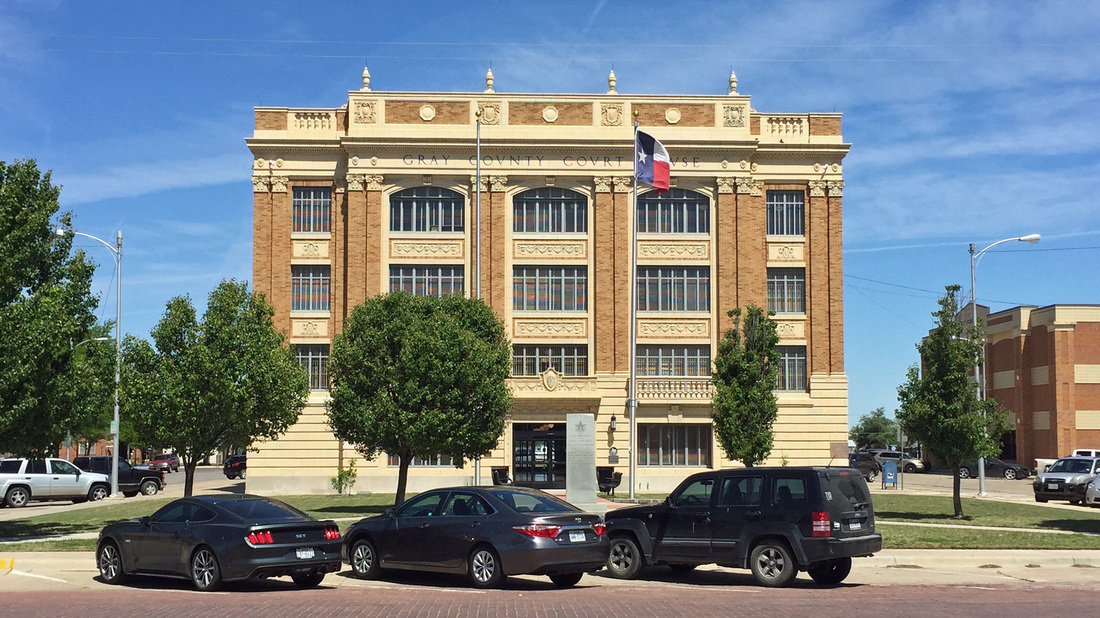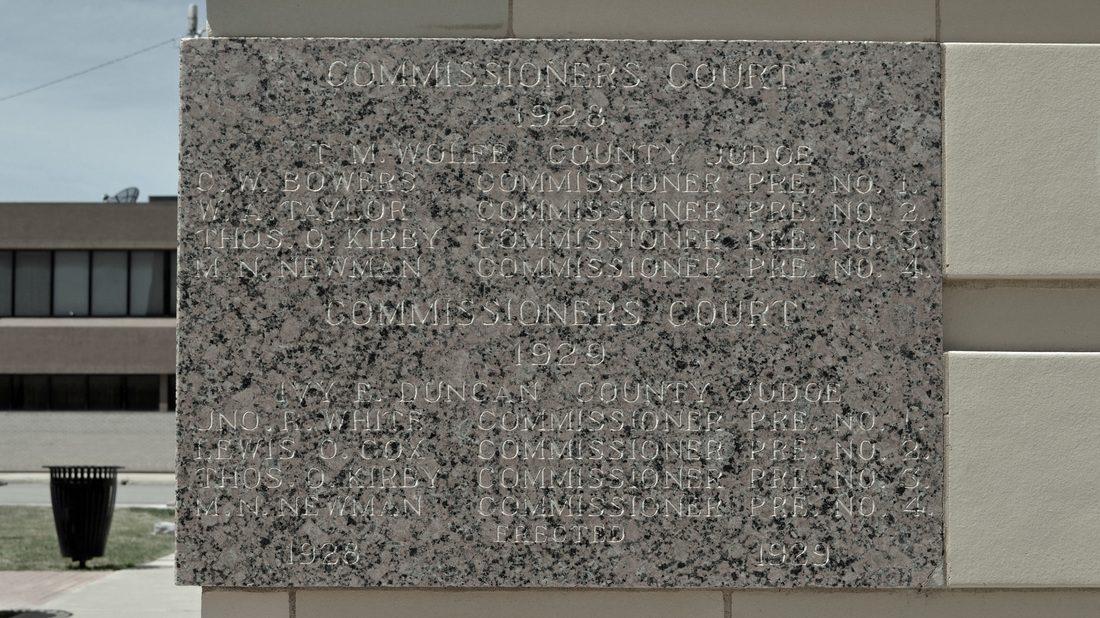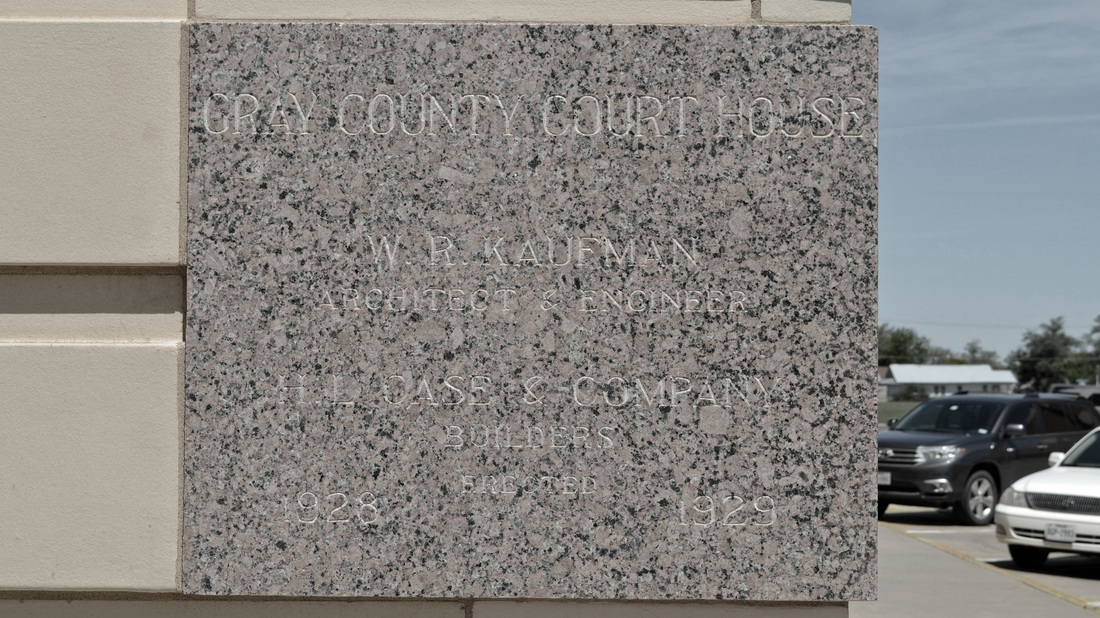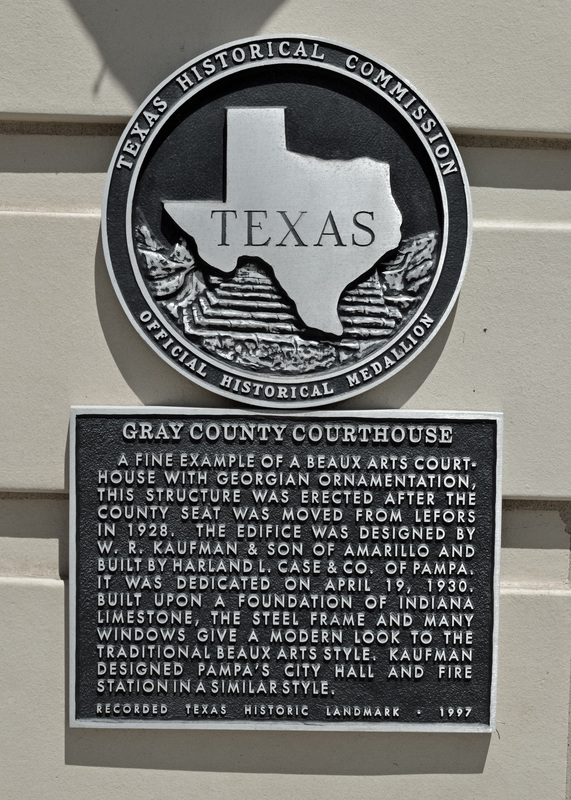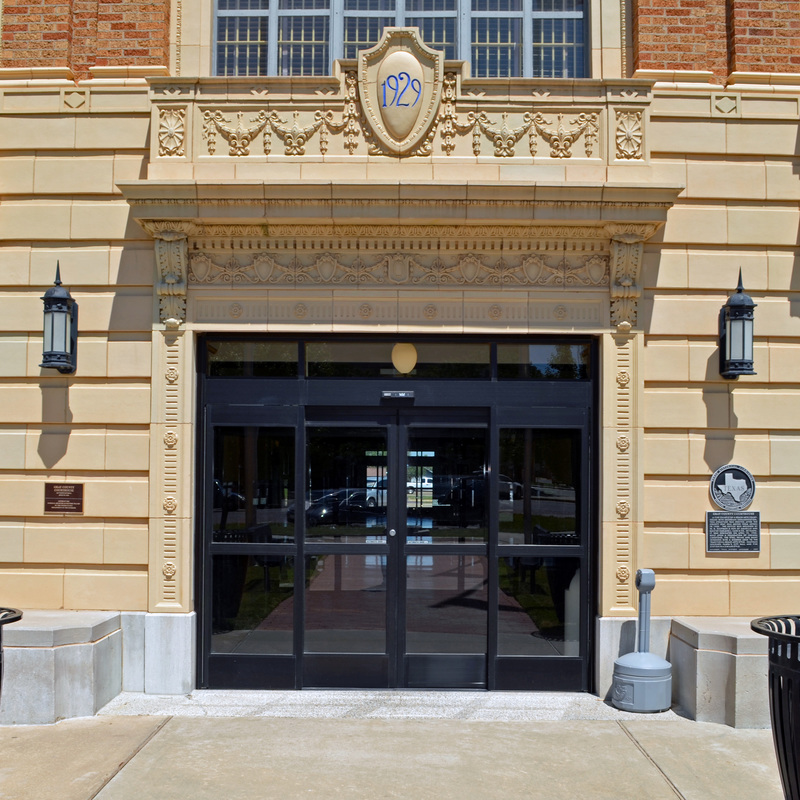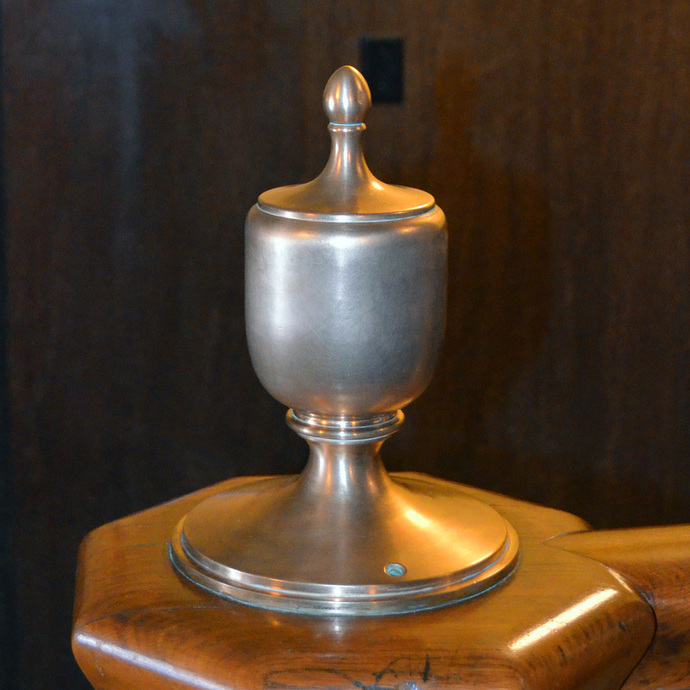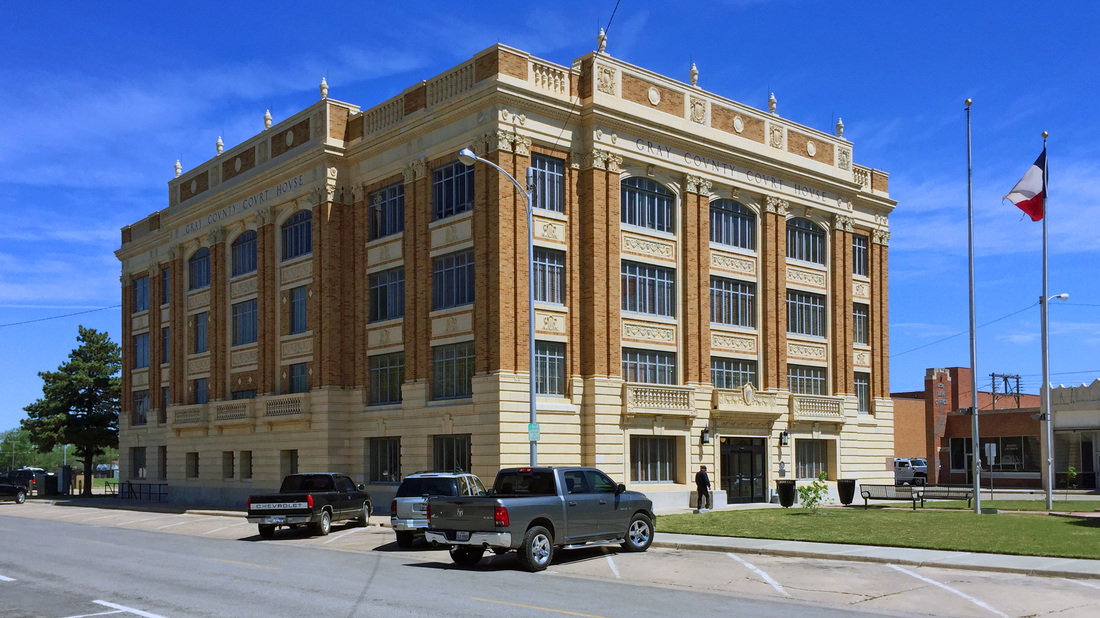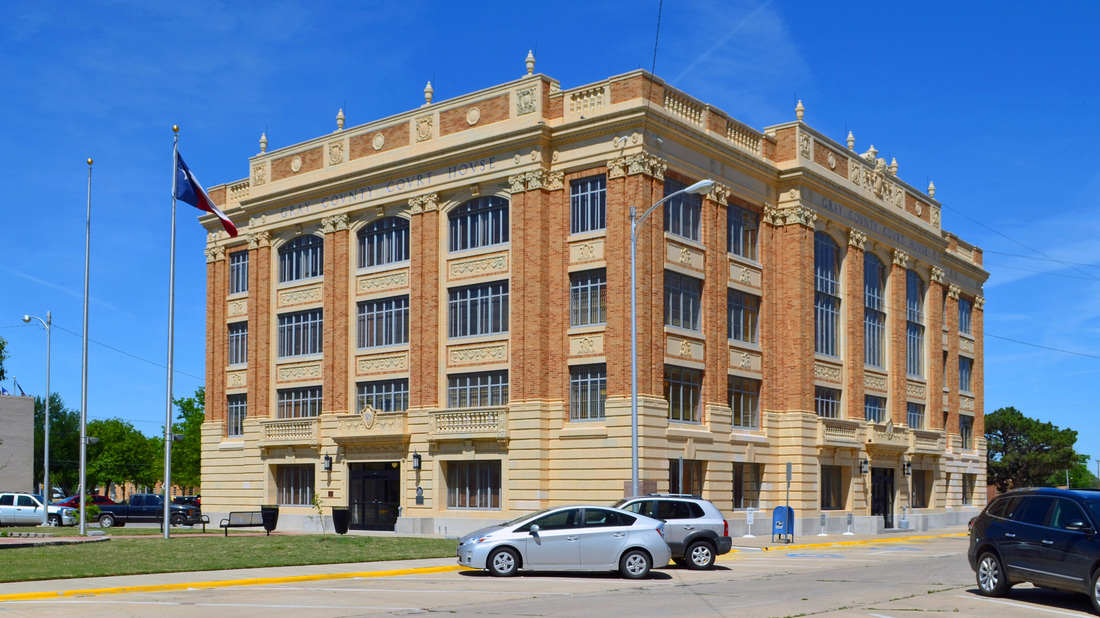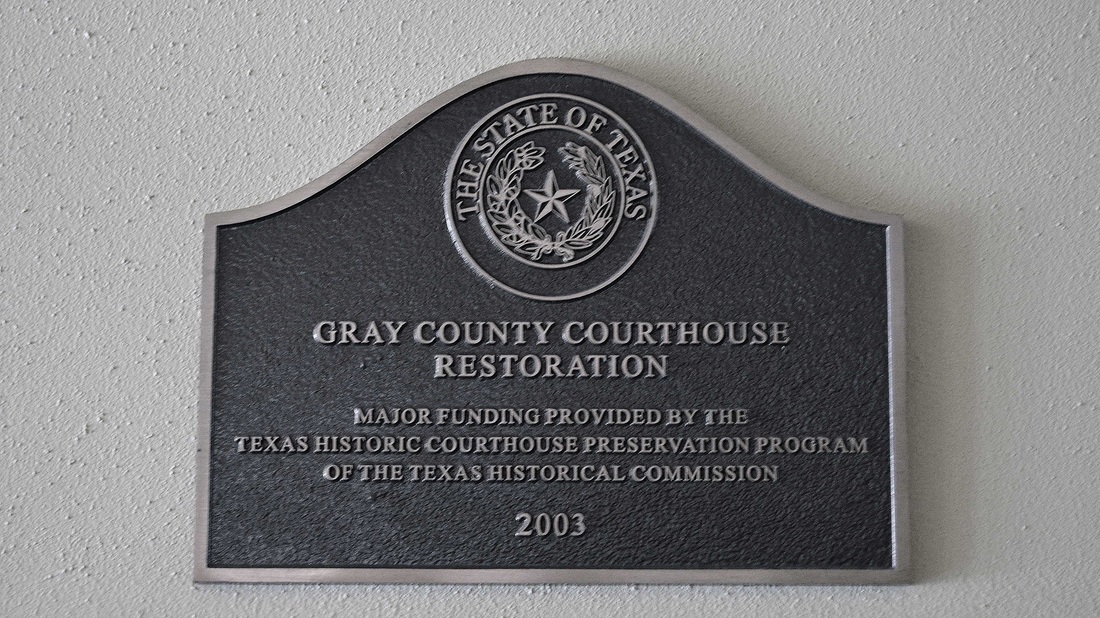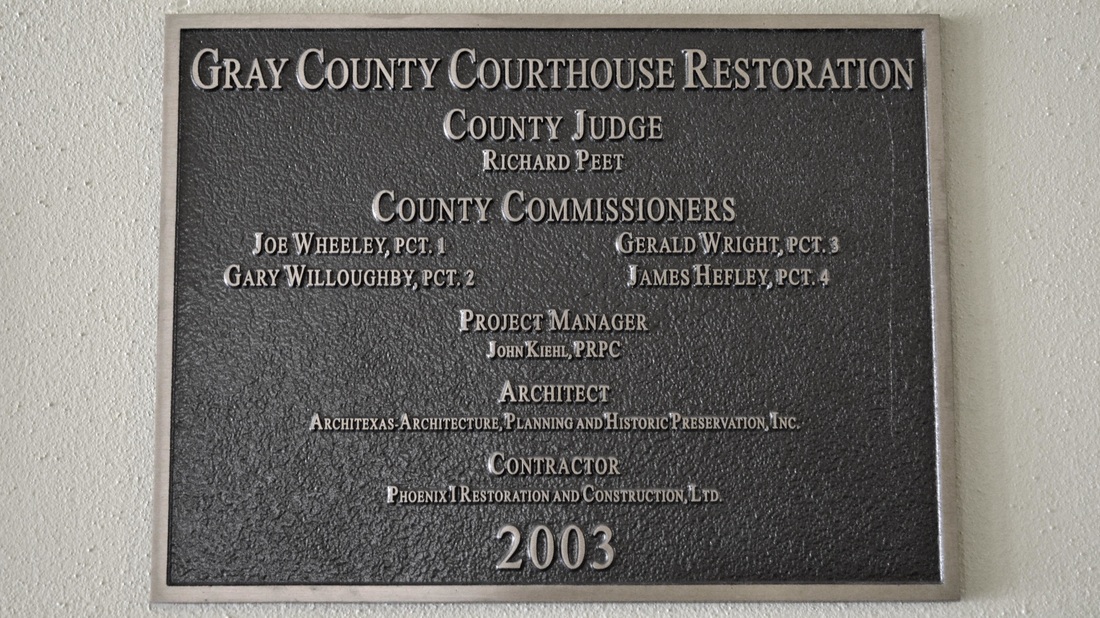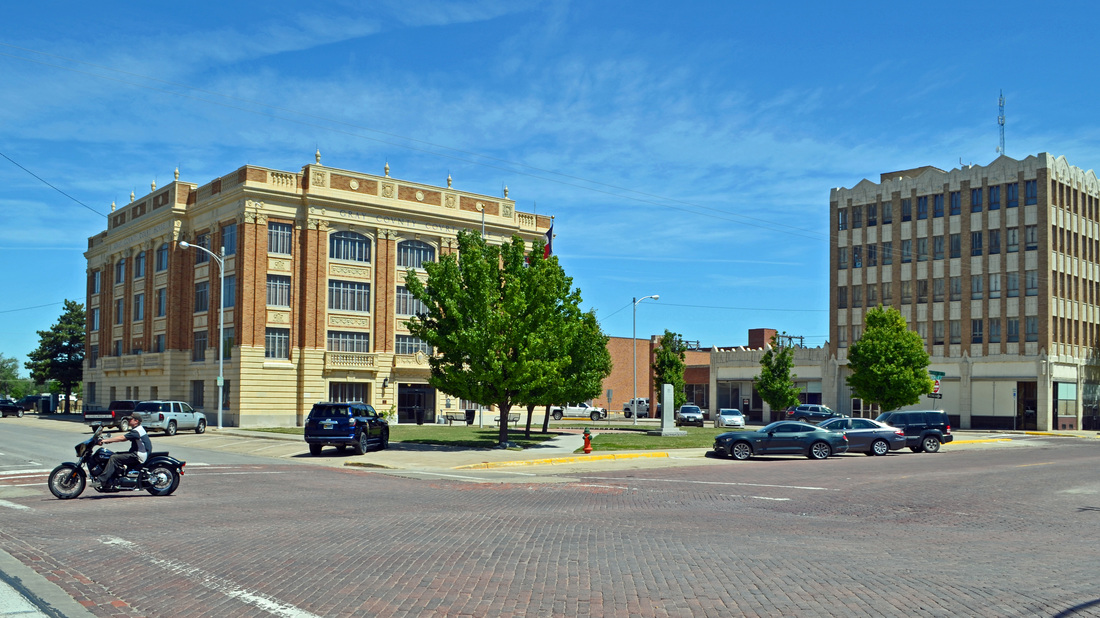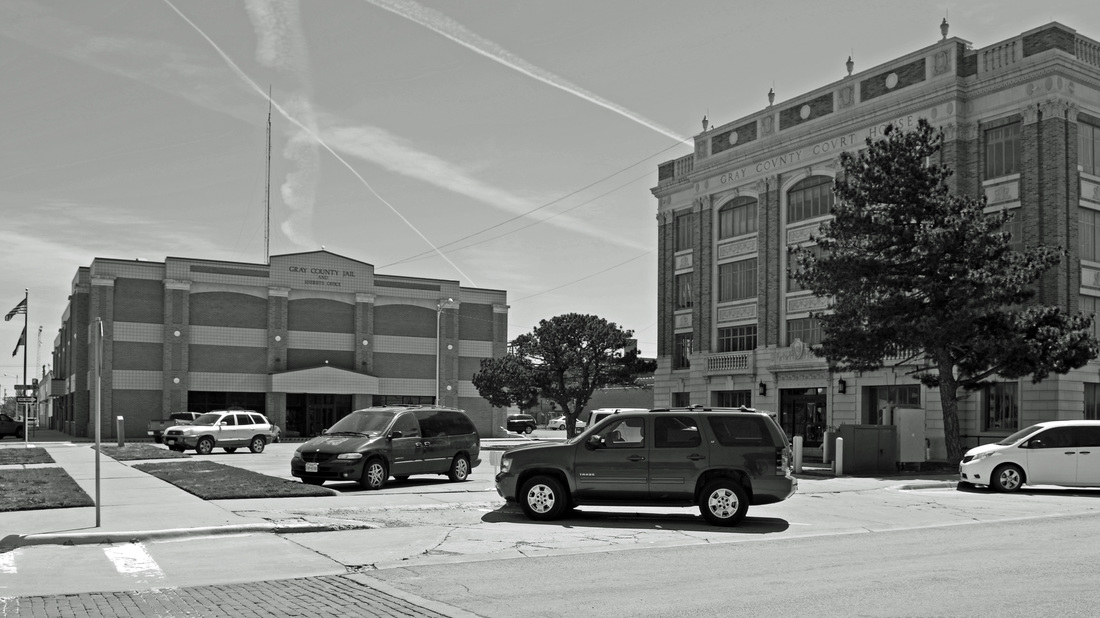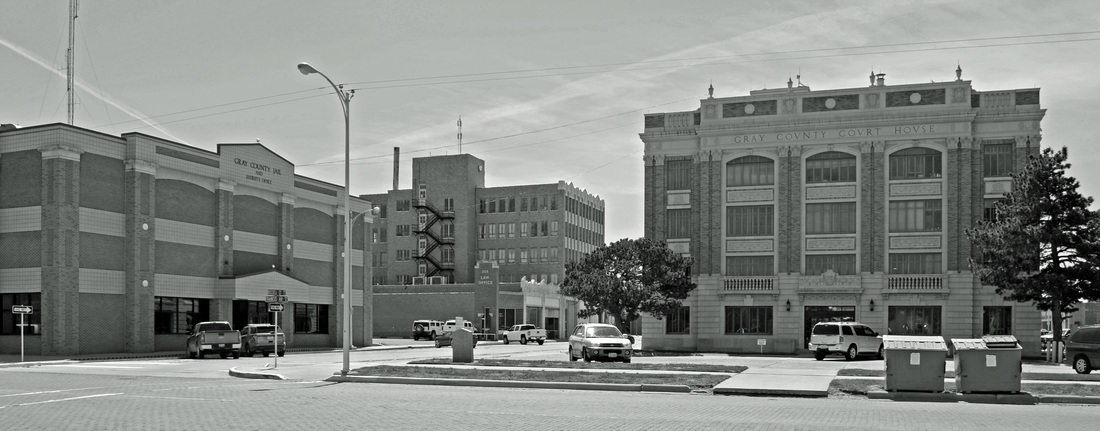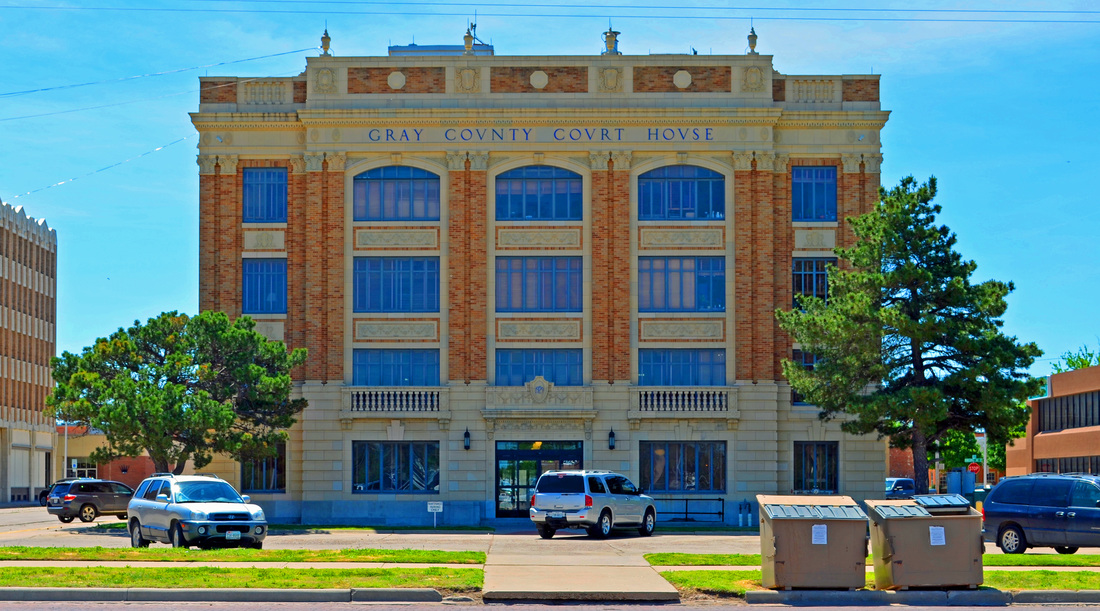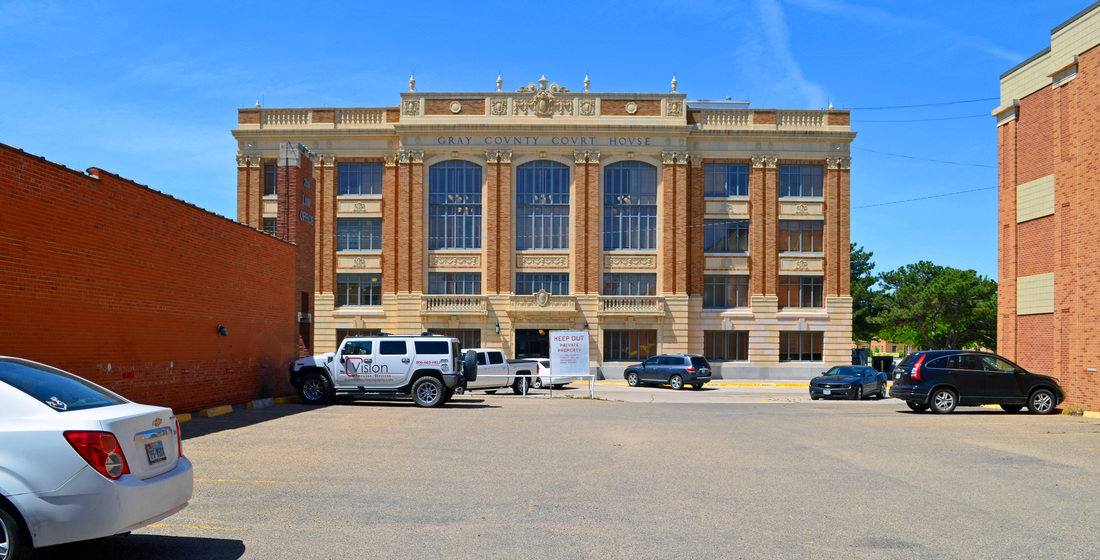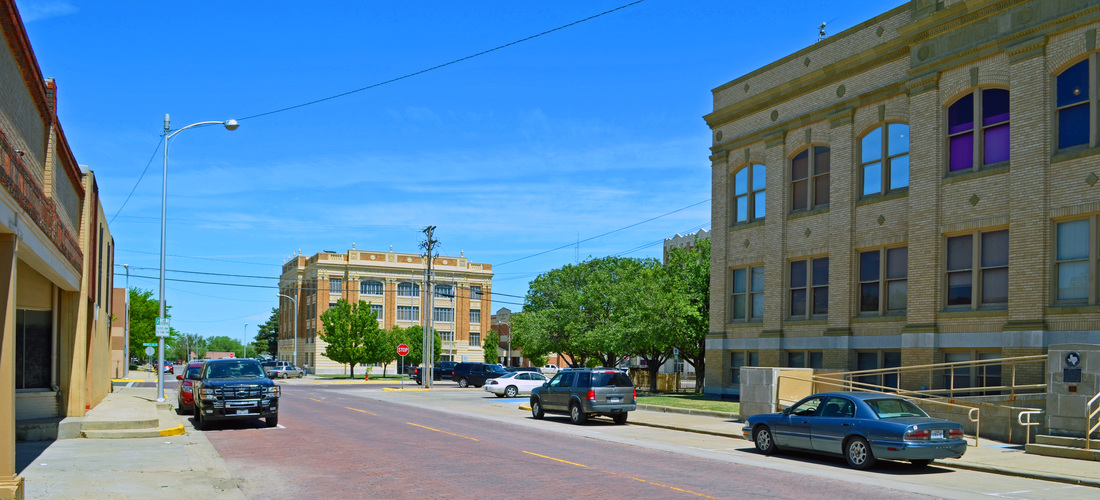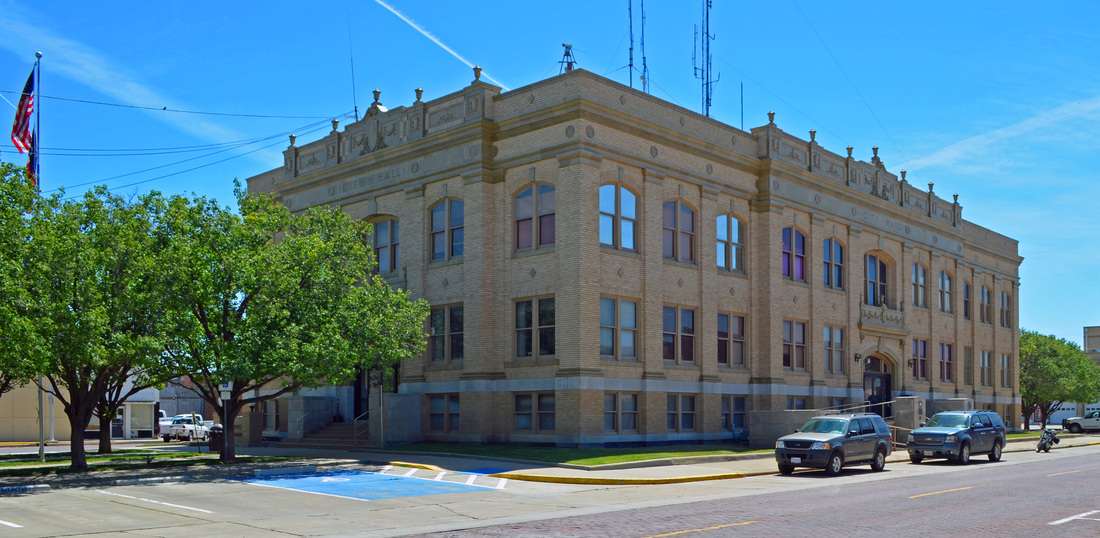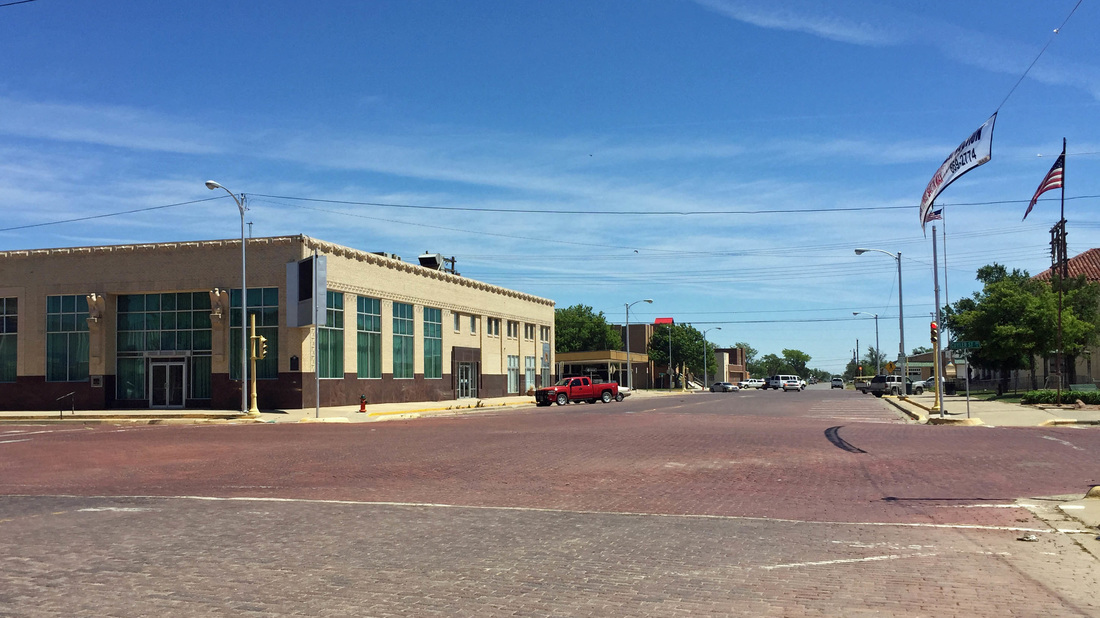241 of 254 Gray County Courthouse, Pampa, Texas. County Population: 22,535
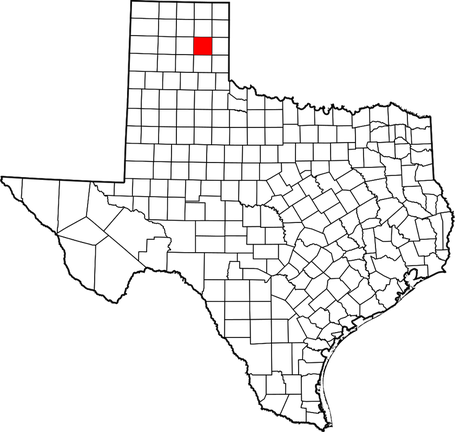 Gray County, Texas
Gray County, Texas
"Gray County occupies 934 square miles of level prairie and rolling river breaks. The elevation ranges from 2,500 to 3,300 feet above sea level, the average annual rainfall is 20.14 inches. Gray County is basically made up of two distinct parts: the flat plains in the west and north, and the Red River breaks in the east, center, and southeast. Gray County is at the head of the North Fork of the Red River; numerous intermittent and flowing creeks can be found in the eastern part of the county.
"Gray County, formed in 1876 out of the Bexar District, was named for Peter W. Gray, a lawyer and politician of the Republic of Texas and Civil War eras. By the turn of the century the county's stable stock-farming population felt a growing need for self-government. As a result, in 1902 the county was organized with Lefors as the county seat. Lefors, a tiny ranching town, remained the county seat until 1928, when Pampa's oil-induced growth led to its becoming the county seat. [It didn't hurt that Pampa was on the Santa Fe Railway's transcontinental line to Amarillo.]
"Farming and ranching dominated the county's economy for a short time, and then major petroleum discoveries greatly altered the county. Oil and gas exploration began in the county during the early 1920s. Between 1925 and 1928 increasing amounts of oil came out of the county's three oilfields (the Lefors, Bowers, and south Pampa fields). A by-product of the local oil economy is a substantial petrochemical industry that produces carbon black and other synthetic materials."
Handbook of Texas Online, Donald R. Abbe, "Gray County"
"Gray County, formed in 1876 out of the Bexar District, was named for Peter W. Gray, a lawyer and politician of the Republic of Texas and Civil War eras. By the turn of the century the county's stable stock-farming population felt a growing need for self-government. As a result, in 1902 the county was organized with Lefors as the county seat. Lefors, a tiny ranching town, remained the county seat until 1928, when Pampa's oil-induced growth led to its becoming the county seat. [It didn't hurt that Pampa was on the Santa Fe Railway's transcontinental line to Amarillo.]
"Farming and ranching dominated the county's economy for a short time, and then major petroleum discoveries greatly altered the county. Oil and gas exploration began in the county during the early 1920s. Between 1925 and 1928 increasing amounts of oil came out of the county's three oilfields (the Lefors, Bowers, and south Pampa fields). A by-product of the local oil economy is a substantial petrochemical industry that produces carbon black and other synthetic materials."
Handbook of Texas Online, Donald R. Abbe, "Gray County"
I visited Gray County and photographed the courthouse in Pampa on May 6, 2016.
